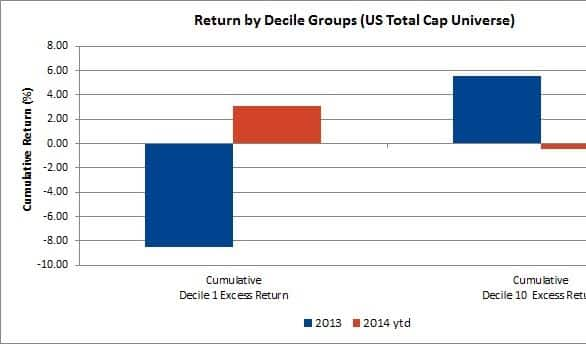The Uber effect

Where Uber and its imitators have gained traction, companies offering traditional taxi provisions are beginning to flail. We’ve seen short sellers converge towards Medallion Financial which provides financing to cab drivers looking to strike out on their own.
- Short interest in Medallion Financial hit an all-time high at over 5% last week
- Shares in the firm have underperformed with a year to date price slump of 16%
- Despite the perceived weakness, the company is expected to continue raising dividends and is forecast to yield over 8% in the coming 12 months
Few investments have been as shrewd over the last 70 years as investing in New York taxicab medallions. These licences, which allow individuals to operate a famed “yellow cab” originally cost $10 when the original lot of 10,000 was sold in 1937, and the fact that their numbers have only increased by a third over the subsequent 75 years has seen their price surge to over $1.3m last year.
Despite these sky high valuations, the medallion’s monopoly on gaining entry to the New York taxi market looks set to weaken in the coming years as companies such as Uber and Lyft start to provide digital competition to their old school peers for their share of the taxi world.
While New York medallions prices are still hovering near their record highs, falling prices in Chicago and lower revenues generated from medallion leasing in San Francisco augur trouble ahead for New York cabbies as new entrants leverage technology to sidestep these once dominant monopolies.
Medallion losing its lustre
Amidst these troubles in the medallion world, New York based Medallion Financial, which provides aspiring cabbies with capital to raise the million dollar fee to acquire a cab, has seen its share slump by over 16% since the start of the year.
The recent share slump has also attracted short sellers, as proportion of the company’s shares out on loan recently hit an all-time high last week. Current demand to borrow now stands at 4.5% of shares outstanding, over two and a half times the number seen last year when medallions were reaching all-time highs.
It’s worth noting that the company is not directly exposed to fluctuations in medallions as the average medallion loan on its books usually carries a loan to value ratio of 36%, according to latest filings. While this number looks pretty safe, the company is basing these assumptions on where medallions are currently trading. Should New York medallion prices revert to the $550,000 they fetched in 2008, a safe assumption given the recent influx of new competition, the $480m that the company loaned against 800 medallions starts to look less comfortable.
Dividends set to climb
This large exposure to the opaque world of taxi medallion has not escaped the company’s management as it has grown its personal and commercial loan portfolio over the last couple of years. These higher yielding loans now make up over 40% of the company’s investments and have contributed to a doubling in the company’s net profits since 2010.
This fact, combined with the company’s tax structure which requires it to redistribute 90% of profits to shareholders, has enshrined the company in the high dividend bracket. Medallion’s trailing 12 month dividend stands at 7.1% and the recent fall in the company’s share price combined with a predicted rise in dividend, according to our dividend team, has the company yielding over 8% in the coming 12 months.